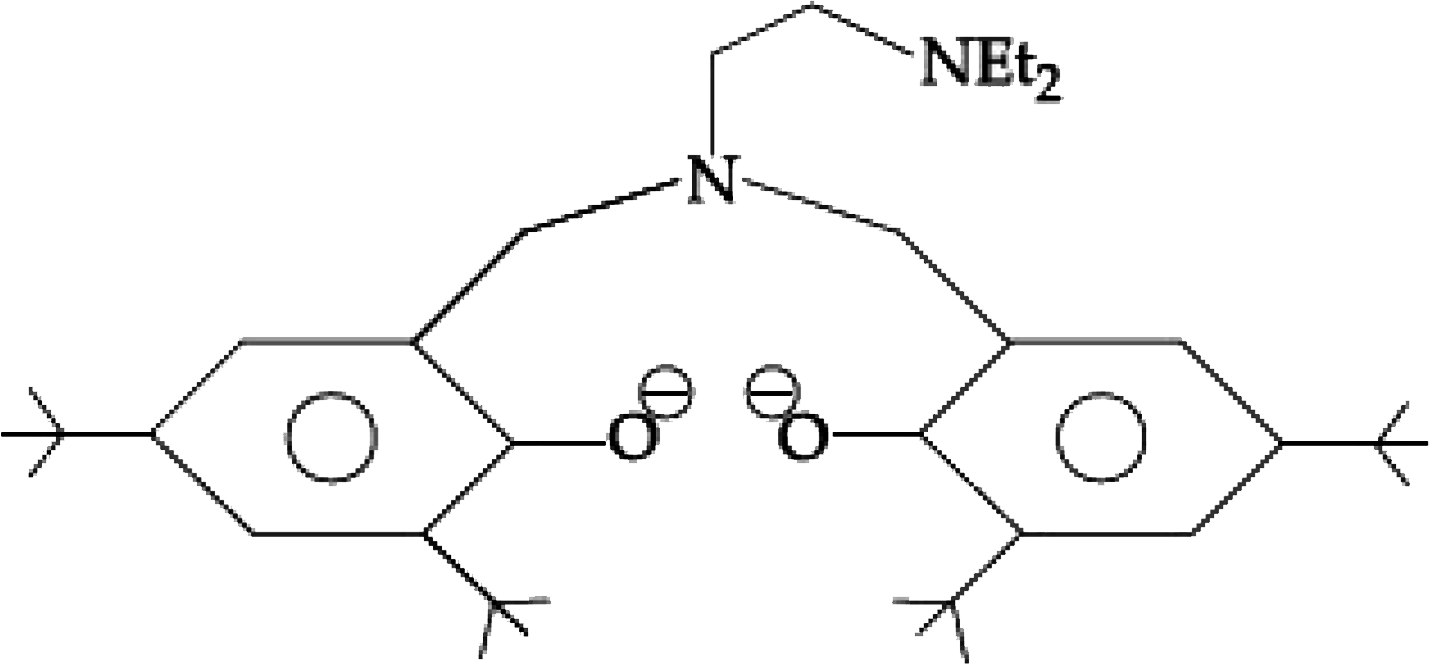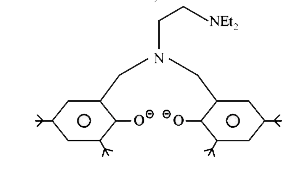Hexadentate ligand out of the following is :
C2O2−4
EDTA
NH2CH2CH2NH2
NO−2
The correct Answer is:B
To determine which of the given ligands is hexadentate, we need to analyze each option based on the number of donor atoms they possess. A hexadentate ligand can attach to a central metal atom through six donor atoms.
1. Understanding Denticity:
- Denticity refers to the number of donor atoms in a ligand that can coordinate to a central metal atom. A ligand is termed hexadentate if it has six donor atoms.
2. Analyzing the Options:
- C2O4 (Oxalate): This ligand has two carboxylate groups (–COO⁻) and can coordinate through two oxygen atoms from each carboxylate group. Therefore, it is bidentate (2 donor atoms).
- EDTA (Ethylenediaminetetraacetate): This ligand has four acetate groups and two nitrogen atoms. Each acetate group can donate one oxygen atom, and the two nitrogen atoms can donate one lone pair each. Thus, EDTA has a total of 6 donor atoms (4 oxygen + 2 nitrogen), making it hexadentate.
- NH2CH2CH2NH2 (Ethylenediamine): This ligand has two nitrogen atoms that can donate lone pairs, making it bidentate (2 donor atoms).
- NO2 (Nitrite): This ligand can coordinate through one nitrogen or one oxygen atom, making it monodentate (1 donor atom).
3. Conclusion:
- Among the given options, only EDTA (Ethylenediaminetetraacetate) is hexadentate because it has six donor atoms.
Final Answer:
The hexadentate ligand out of the following is EDTA (Ethylenediaminetetraacetate).
---
- Denticity refers to the number of donor atoms in a ligand that can coordinate to a central metal atom. A ligand is termed hexadentate if it has six donor atoms.
- C2O4 (Oxalate): This ligand has two carboxylate groups (–COO⁻) and can coordinate through two oxygen atoms from each carboxylate group. Therefore, it is bidentate (2 donor atoms).
- EDTA (Ethylenediaminetetraacetate): This ligand has four acetate groups and two nitrogen atoms. Each acetate group can donate one oxygen atom, and the two nitrogen atoms can donate one lone pair each. Thus, EDTA has a total of 6 donor atoms (4 oxygen + 2 nitrogen), making it hexadentate.
- NH2CH2CH2NH2 (Ethylenediamine): This ligand has two nitrogen atoms that can donate lone pairs, making it bidentate (2 donor atoms).
- NO2 (Nitrite): This ligand can coordinate through one nitrogen or one oxygen atom, making it monodentate (1 donor atom).
- Among the given options, only EDTA (Ethylenediaminetetraacetate) is hexadentate because it has six donor atoms.
The hexadentate ligand out of the following is EDTA (Ethylenediaminetetraacetate).
Topper's Solved these Questions
- COORDINATION COMPOUNDS BOOK - ICSECHAPTER - COORDINATION COMPOUNDS EXERCISE - EXERCISE (PART - II DESCRIPTIVE QUESTIONS) (VERY SHORT ANSWER TYPE QUESTIONS)
67 Videos
- COORDINATION COMPOUNDS BOOK - ICSECHAPTER - COORDINATION COMPOUNDS EXERCISE - EXERCISE (PART - II DESCRIPTIVE QUESTIONS) (SHORT ANSWER QUESTIONS)
74 Videos
- COORDINATION COMPOUNDS BOOK - ICSECHAPTER - COORDINATION COMPOUNDS EXERCISE - EXERCISE (PART - I OBJECTIVE QUESTIONS)
22 Videos
- CHEMISTRY-2020 BOOK - ICSECHAPTER - CHEMISTRY-2020 EXERCISE - Question (Answer the following question)
4 Videos
- d- AND- f- BLOCK ELEMENTSBOOK - ICSECHAPTER - d- AND- f- BLOCK ELEMENTSEXERCISE - ISC EXAMINATION QUESTIONS (PART-II)(DESCRIPTIVE QUESTIONS)
15 Videos
Similar Questions
Knowledge Check
Bidentate ligand out of the following is :
AEDTABEthylenediamineCAcetateDPyridineThe ligand which is not chelating is :
AEDTABC2O2−4CCH3COO−Den.
The following ligand is :

View SolutionThe question consist of two statements each, printed as Assertion and Reason. While answering these questions you are required to choose any one of the following four responses:
Assertion: Charge on the complex of ferric ion with EDTA is minus one.
Reason: EDTA is a hexadentate ligand.
View SolutionWhat is maximum denticity of the following ligand ?

View SolutionDefine a hexadentate ligand and give one example of it. How is it used to measure the hardness of water ?
View SolutionAssertion: [Fe(EDTA)]− complex is octahedral in shape.
Reason: EDTA is a hexadentate ligand and undergoing sp3d2 hybridisation.
View SolutionWrite the name of the following ligands and classify their denticity
(a) o- phen (b) NOS−
View Solution
